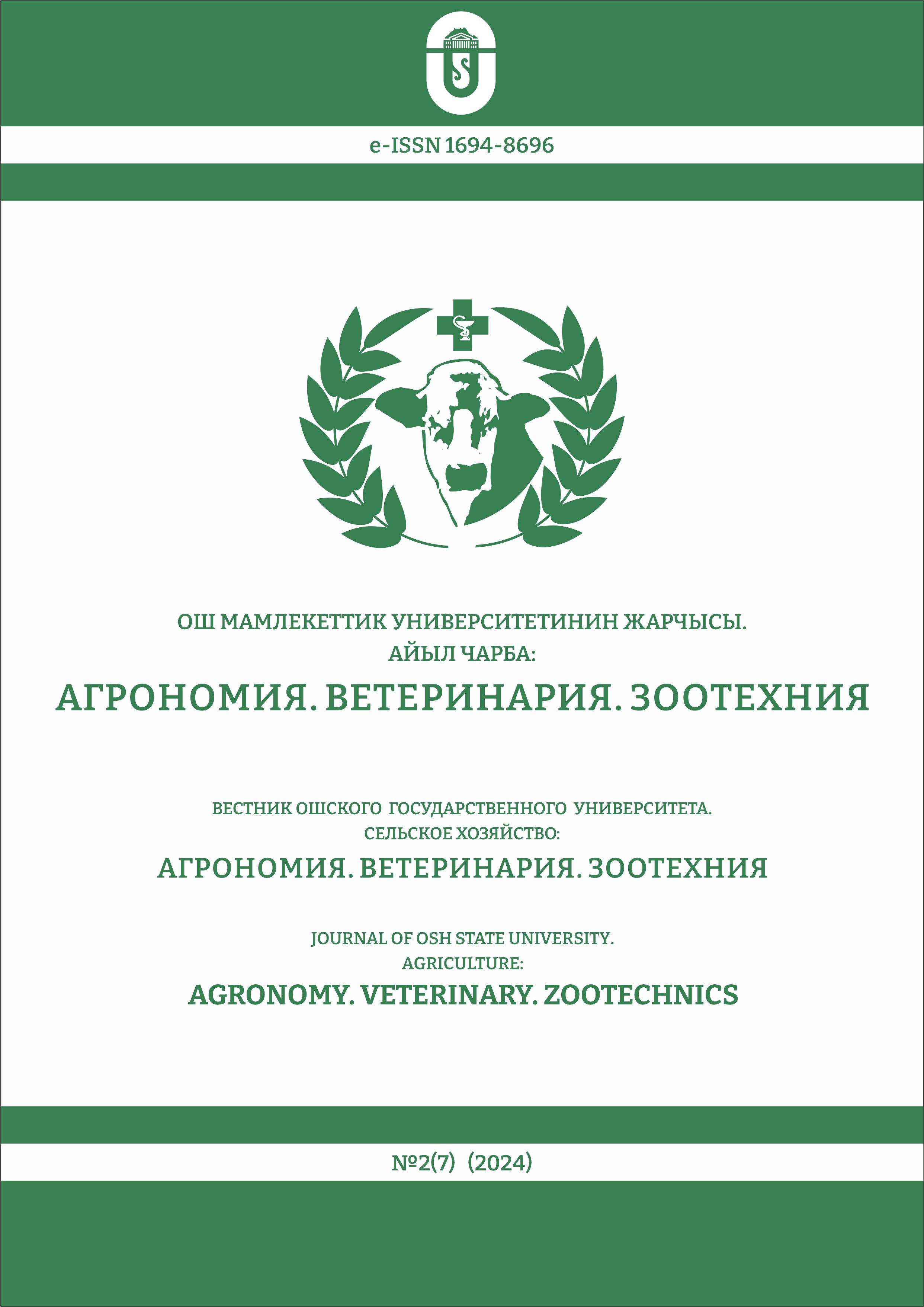АНАЛИЗ ПЛЕМЕННЫХ И ПРОДУКТИВНЫХ КАЧЕСТВ ДВУХ ГЕНЕАЛОГИЧЕСКИХ ЛИНИИ КАЗАХСКИХ ЛОШАДЕЙ ТИПА ЖАБЕ
DOI:
https://doi.org/10.52754/16948696_2024_2(7)_15Ключевые слова:
коневодство, тип, линия, промеры, живая масса, мясная и молочная продуктивностьАннотация
В статье приведены промеры тела, живая масса, а также данные по мясной и молочной продуктивности линейных лошадей типа жабе. Основная цель разведения по линиям- не только сохранение наследственных качеств родоначальника, но и обогащение линии путем накопления в течение нескольких поколений новой ценной наследственности. Особая ценность линейных животных состоит в том, что они более стойко сохраняют в потомстве свои высокие продуктивные и племенные качества.
Лошади линии Зымырана отличаются ярко выраженными мясными формами, имеют удлиненное туловище и обхватистую грудную клетку. По результатам контрольных убоев кобылы и жеребчики линии Зымырана как по массе полученных туш, так и по убойному выходу характеризуются как высокопродуктивные мясные животные, масса туши (240,20-202,14) и убойный выход (53,3-56,4%). А у линии Арда как по массе полученных туш, так и по убойному выходу характеризуется как мясо-молочные животные, масса туши (225,10-197,00) и убойный выход (52,3-56,2).
Исследования показали, что казахские кобылы типа жабе двух линии имели неодинаковую молочную продуктивность. Более высокой молочной продуктивностью при пастбищных условиях содержания обладали кобылы линии Арда (1792,2 кг), в то время как у кобыл линии Зымырана (1664,2 кг).
Библиографические ссылки
Антипов Г.П. Некоторые актуальные вопросы развития современной теории разведения животных // Перспектив, направления биол., экол. и с.-х. науки в XXI в.: Тез. докладов Рос.-Иран. семинара. М.: МСХА, 2000. - С. 23-27.
Богданов Е.А. Как можно ускорить совершенствование и создание племенных стад и пород (разведение по линиям) // Сельхозгиз, 3 изд. М.: 1938. - С. 56.
Нечаев И.Н., Тореханов А.А., Жумагул А.Е. и др. Казахская лошадь (прошлое, настоящее, будущее). – Алматы: «Эдельвейс», 2005. – 207 с.
Барминцев Ю.Н.Казахская лошадь «жабе» и перспективы её разведения//Коневодство. - 1954. - №5. -С.6-13.
Инструкция по бонитировке местных и заводских лошадей от 10 октября 2014 года № 3-3/517
Методика определения мясной продуктивности лошадей//ВНИИК,-М.,1974.-С.5-4.
Сайгина И.А.Мясное и молочное коневодство.-Уфа,1954. - С.12-14.
Нурмаханбетов Д.М. Зоотехническая характеристика Заводской линии Зымырана 101-76 Казахских лошадей типа жабе / Наука и образование. Научно-практический журнал Западно-Казахстанского аграрно-технического университета имени Жангирхана. - №2 (55) - 2019. - С.-105-109.
Дуйсембаев К.И. Исследование аминокислотного состава и электрофоретических свойств белков кобыльего молока, используемого для производства кумыса: автореф. … канд.с.-х. наук.– Алма-Ата, 1968.-21 с.
Даниленко Л.И. Интерьерные качества казахской лошади типа жабе и связь их с уровнем молочной продуктивности: автореф. … канд. с.-х. наук. – АлмАта, 1972.-22 с.
Загрузки
Опубликован
Как цитировать
Выпуск
Раздел
Лицензия
Copyright (c) 2024 Даурен Нурмаханбетов , Жасулан Кожанов

Это произведение доступно по лицензии Creative Commons «Attribution-NonCommercial» («Атрибуция — Некоммерческое использование») 4.0 Всемирная.


